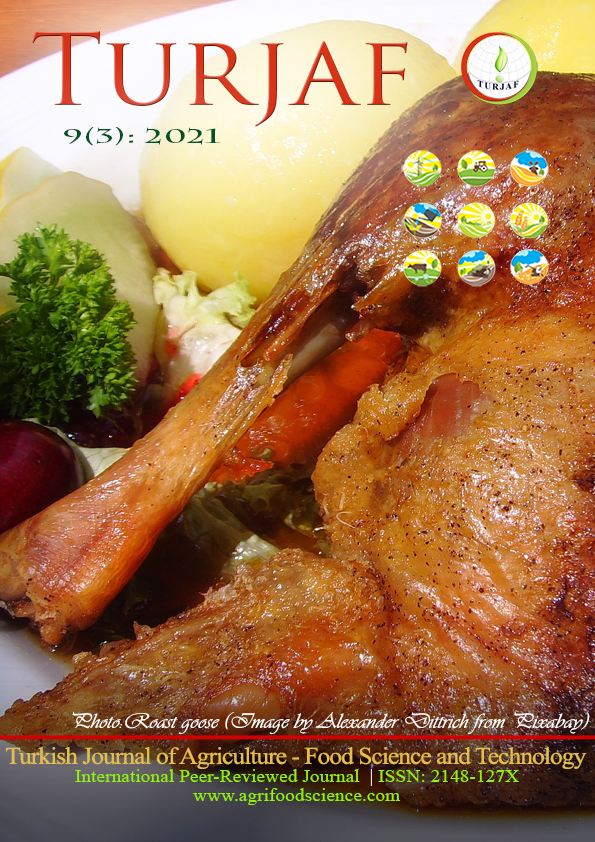Characterization of Volatile Compounds and Sensory Properties of Chaste (Vitex agnus-castus L.) Honeys
DOI:
https://doi.org/10.24925/turjaf.v9i3.621-631.4165Keywords:
Chaste honey, Volatile compound, Sensory analysis, Flavour, Vitex agnus-castus L.Abstract
In this study, it was aimed to characterize some physical and chemical properties, volatile compounds and sensory properties of chaste honey produced in Aydın, Çanakkale, İzmir and Muğla provinces. A total of 16 different volatile compounds (4 aldehydes, 3 furans, 2 alcohol, 2 sulphur compounds, 2 terpenes, 1 alkane, 1 benzenic compound and 1 ketone) were identified in the evaluated chaste honeys. It was determined that common volatile compounds of chaste honeys were dimethyl sulphide, octane, nonanal, 2-furancarboxaldehyde, 2-ethyl-1-hexanol, 1- (2-furanyl) -ethanone, benzaldehyde, 5-methyl-2-furancarboxaldehyde, and benzenacetaldehyde. Benzenacetaldehyde was the most abundant volatile compound in all chaste honeys, followed by benzaldehyde and 2-furancarboxaldehyde. As a result of the sensory evaluation, floral, fruity, caramel-like, bitter almond, fermented, animal-like, spicy, waxy, and woody aroma characters, sweet and sour taste characters and astringent mouthfeeling were detected in chaste honeys. The floral, fruity, caramel-like, sweet, and sour characters were intensely perceived in all samples.Downloads
Published
28.03.2021
How to Cite
Dadalı, C. (2021). Characterization of Volatile Compounds and Sensory Properties of Chaste (Vitex agnus-castus L.) Honeys. Turkish Journal of Agriculture - Food Science and Technology, 9(3), 621–631. https://doi.org/10.24925/turjaf.v9i3.621-631.4165
Issue
Section
Research Paper
License
This work is licensed under a Creative Commons Attribution-NonCommercial 4.0 International License.









